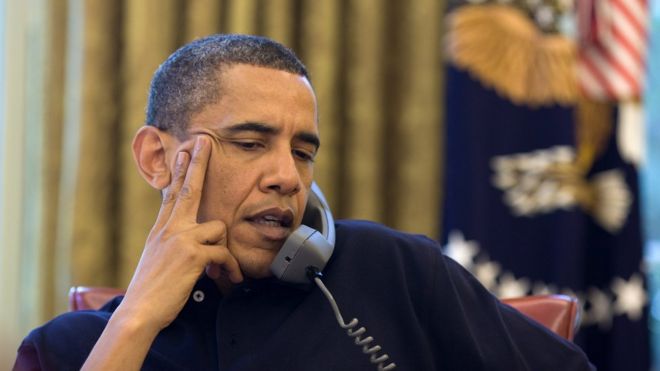
Less than half of US households now have a landline, according to a study from the US government.
Of the households surveyed by the Centers for Disease Control and Prevention (CDC), 50.8% of homes had at least one mobile phone but no landline.
A further 3.3% of homes surveyed had neither a mobile phone nor a landline.
The CDC found that mobile-only households had become the majority during its twice-yearly survey into the health and habits of Americans.
Representative sample
Participants in the National Health Interview Survey are asked to provide a residential phone number in case the CDC needs to contact them again.
In 2003, it started to ask participating households whether they had "at least one phone inside [the] home that is currently working and is not a cell phone".
Its preliminary data for the second half of 2016 suggests that only 45.9% of households had a landline.
The CDC does not explore the reasons why participants do not have a fixed phone line, if that is the case.
Instead, it uses the data to help ensure it is interviewing a representative sample of the US population.
Shared houses
The CDC says that the number of households without a landline has risen by 2.5% since the same period in 2015.
It suggests that more than 123 million adults (50.5%) and more than 44 million children (60.7%) live in households with at least one mobile phone but no landline.
More than 70% of adults aged 25-34 were found to live in mobile-only homes, while almost 84% of households made up of unrelated adults had no fixed phone line.
Renters, adults deemed to be living in poverty or near-poverty, and Hispanic adults were also found to be more likely to live in mobile-only households.
Cutting the cord
In the UK, the proportion of mobile-only households is much lower.
Figures from the telecoms and communications watchdog, Ofcom, show that at the start of 2017, just 18% of UK households were mobile-only.
The reason, it says, is that despite a steady decline in the quantity of calls made and received via a landline, most homes still need one in order to get fixed line broadband.
Many in the US can get their broadband and TV via a cable provider instead, which removes the need for a traditional phone line.
. . . Courtesy ::: BBC
0 comments:
Post a Comment